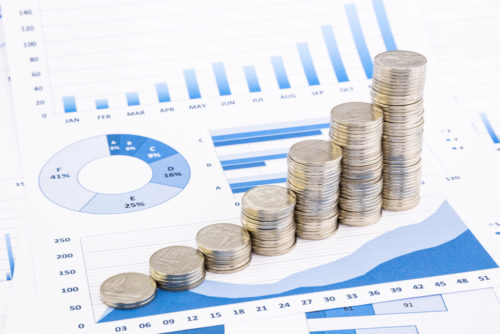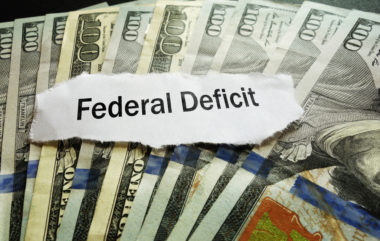It may seem impossible to save up enough money for retirement when you are young and barely scraping by, paying off bills and struggling even to save up for emergencies. You may have a 401K or IRA, but no real idea how it works other than that you put a bit of money from your paycheck in each month and hope for the best. How does this help you save up enough to retire? The answer comes in the form of compound interest.
Table of Contents
Compound Interest
To understand compound interest, we need to know first what simple interest is. Let’s say you have a bank account with $100 in it, and have a 5 percent interest rate, with interest calculated once per year. After the first year, you will earn 5 percent in interest, or $5, for a total of $105.
Compound interest means this money earned on interest will also gain you more money at the same rate. You’ll earn the 5 percent on the $100, and another 5 percent on the new $5. Instead of only gaining interest on the principal, you gain interest on the total amount of money in the account. In, for example, an IRA account, the interest is put back into the account, gaining more and more money in a sort of snowball effect.
In short, compound interest gains you more money, faster. Online banks, for example, might offer compound interest on accounts as an incentive to do business with them. Interest might compound daily, with the accrued interest deposited into your account monthly.
Credit Cards
Some loans also make use of compound interest. In this case, you will owe more money the less you pay over time, instead of owing a static amount via simple interest. This can be dangerous for borrowers, because the loan can quickly growing too big to pay back effectively.
For example, credit card issuers often use compound interest to calculate credit card interest. Depending on your account’s terms and conditions, the annual percentage rate may be a result of daily or monthly compounded interest. While a 401K or savings account will use compound interest to make you money, compound interest on a credit card can add up quickly, meaning you will owe more money month over month if you do not pay it down the amount owed.
Compound Frequency
Compound interest can be agreed upon to compound at different times — daily, monthly, annually, and that frequency can really make a difference. Ideally, you want the account to compound daily. While in the short term, it isn’t much of a difference, spread out over decades, that tiny difference becomes much larger.
Compound Interest Formula
This formula for compound interest is the total amount of principal and interest as a future value, minus principal at present.
- C is the compound interest;
- P is the principal, or original deposit;
- r is the annual interest rate as a percentage;
- n is the frequency (For example, monthly would be 12 for each month, while yearly would simply be 1 for compounding once)
C = [P (1+r)^n -1]
Using the example from above, we can work step by step. It’s important to note that r is the rate per month. If, for example, the interest rate is 5 percent compounding monthly, r would equal 5/12. Using the above example, with $100 compounded monthly at a rate of 5 percent:
$100 [(1+(0.05/12))^12 -1]
100 [(1+(0.00416))^12 -1]
100 [1.00416^12 -1]
100 [1.0512 -1]
C = 100 [0.0512] = $5.12
The compound interest for the year is $5.12, though, depending on how the account rounds, could be slightly different. In total, the account will have $105.12 at the end of the year.
Simple interest, on other hand, is simply the principal multiplied by rate multiplied by time; in this case, $100 times 1 year times 5 percent, or just $5. In a single year, compound interested doesn’t represent an impressive gain versus simple interest – a difference of 12 cents – but compound interest will start to add up as years go on.
You can calculate how much you will make with compound interest over time, as well. The end balance, given a number of years, is:
- t is the time in years.
C = 100(1+r)^nt
Using the previous example, but going out 5 years, this is
C = 100(1+0.00416)^(12*5) = $128.28
This is very similar to the formula above, but solving for a different part of the equation.
Rule of 72
You can also figure out the what interest rate you will need, given a set length of time, to double your principal by using the Rule of 72. The formula to determine the interest rate needed is:
Rate required to double = 72/t
Where t equals time. Say, for example, you want to double your principal in 10 years. What interest rate do you need to make that happen?
72/10 = 7.2
Doubling your principal in 10 months requires an annual percentage yield of 7.2 percent.
We can also reverse the formula to figure out, given an interest rate, how long doubling will take. Using the recurring example, if we know that the rate is 5 percent, we can divide 72 by 5 to find it will take 14.4 years to double.
APR Formula
You can also calculate your credit interest using your APR and balance.
The formula is:
- r is the rate;
- b is the account balance;
- d is the number of days in the month.
[(r/365)b]d
Say, for example, you have an APR of 20 percent, a balance of $1,000 after holiday shopping, and it’s December, with 31 days.
[(.2/365)1000]31
[(.00054)1000]31
[0.548]31 = $16.99 interest
The daily interest rate is very small, but when it’s multiplied by your balance, and then by the number of days in the month, it suddenly costs almost $17 in interest for a single month.
Compound Interest Calculator
The US Securities and Exchange Commission offers a free compound interest calculator which will save you from having to work out the math yourself.
There’s one field in that calculator we have not yet discussed: contributions. You could, in theory, have an initial principal and add nothing to it, letting it slowly accrue interest over time. However, compound interest only becomes more mathematically powerful when you start contributing money monthly. In a 401K, for example, you might have a small part of each paycheck taken out and put in an IRA. Adding in more money to the account balance means more money to compound, leading to higher returns more quickly.
Let’s assume you start with the original $100, with a 5 percent interest rate, compounded monthly. If you add in $5 each month for 20 years, you’d end up with $2,326.43 total in your account. Your total contributions ($5 x 240 months) were $1,300. The rest, more than $1,000, was made with compound interest.
As noted earlier, this can be a great boon if you are saving money long-term, but it can also hurt your finances if compound interest is part of your loan, or you have a high credit card balance. Both of these can act as an incentive for saving more for retirement, or paying off your credit card quickly.
Image Source: https://depositphotos.com/





